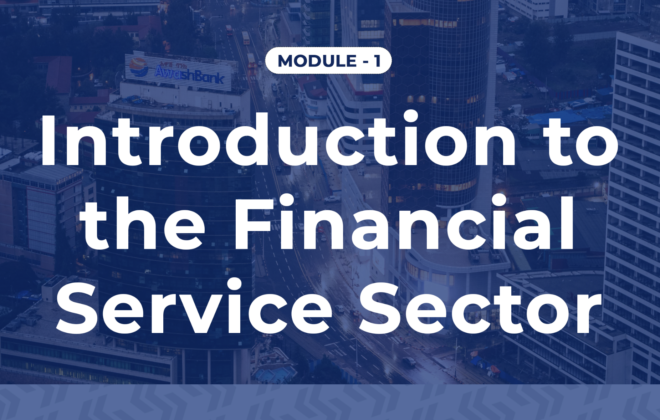Module 1 – Introduction to the Financial Service Sector

About Course
Welcome to the world of finance! The financial system and capital markets are like the engines that help an economy run smoothly. At their core, they help connect people and businesses who need funds with those who have money to invest. Imagine you want to start a business or buy a house but don’t have enough money upfront. Through the financial system, you can get the funds you need, often by borrowing or finding investors. At the same time, people with savings can put their money to work by investing in businesses, bonds, or other financial assets, hoping to earn a return. In this module, we’ll explore how this system works, the role of the capital market, and why both are essential for growth and stability in our economy.
Without the financial system, daily life would be vastly more complicated, and the economy would be far less efficient. Imagine if we still relied on barter—trading goods directly to get what we need. If you were a farmer needing tools, you’d have to find someone with tools who also wanted your crops. This could take a lot of time and limit what you could trade for. That’s why the concept of money became so powerful: it provides a way to store value, making it easier for everyone to exchange, save, and invest.
The financial system builds on this by providing a whole ecosystem for managing and moving money. As a medium of exchange, money allows us to buy goods and services easily, and the financial system enables these transactions to happen smoothly. It also serves as a store of value, allowing people to save their money for future needs or goals—whether that’s buying a home, funding an education, or retiring comfortably.
In addition, financial institutions like banks, insurance companies, and capital markets help people not only to save but to grow their money. They provide a way for individuals and businesses to invest their savings, turning those funds into capital that fuels business expansions, new inventions, and job creation. Without this system, it would be nearly impossible for businesses to access the funds needed to grow, for people to plan their financial futures, or for economies to thrive.
In comparison, life under the old barter system was slow, uncertain, and limited people’s ability to accumulate and use resources effectively. The financial system is like a bridge between today’s resources and tomorrow’s potential, creating stability and opportunity at every level.
This comprehensive module offers an in-depth exploration of the Financial Service Sector, focusing on its essential roles in the economy and the mechanisms that drive its operations. Students will develop a foundational understanding of the financial system, including its defining characteristics, key functions such as direct and indirect finance, and its importance for economic stability and growth.
The module examines key players, such as financial institutions and regulatory bodies, alongside the technological frameworks that support financial infrastructure. As students progress through the course, they will delve into different types of financial institutions, their classifications, and functions—specifically focusing on depository and non-depository forms such as insurance companies, pension funds, and investment banks.
Additionally, the module covers the dynamics of financial markets and instruments, elaborating on their structures, classifications, and functions, including primary vs. secondary markets, as well as cash and futures markets. A special emphasis will be placed on the Ethiopian capital market, its regulatory environment, and the Ethiopian Securities Exchange (ESX). Students will also engage with essential investment concepts, exploring the interrelated nature of saving, investment, risk, and return. This will encompass vital methodologies such as the Capital Asset Pricing Model (CAPM) for portfolio analysis, techniques for risk management, and the importance of ethical practices within financial markets.
By the end of the course, students will have a multifaceted understanding of the financial landscape, empowering them to navigate and contribute effectively to this critical sector.
Course Content
Module Introduction
-
Module Introduction
02:01






